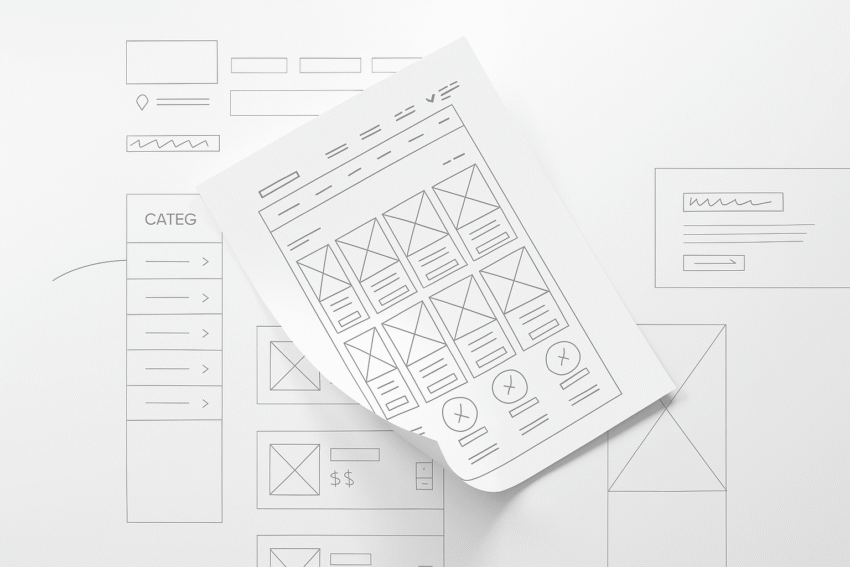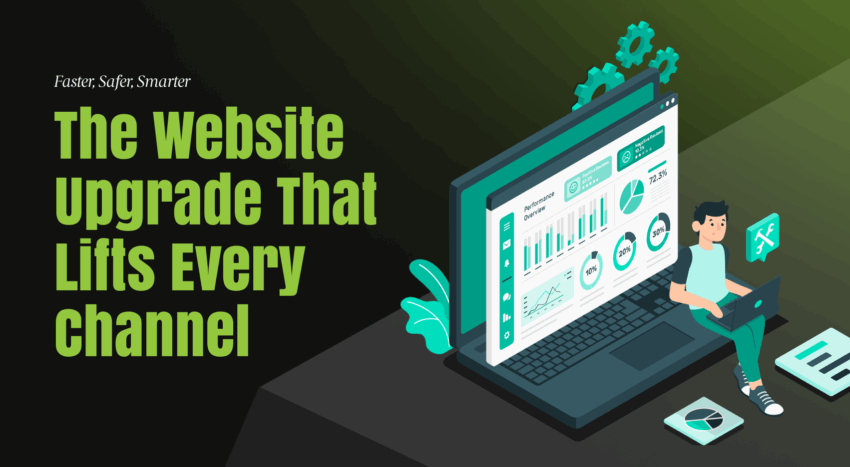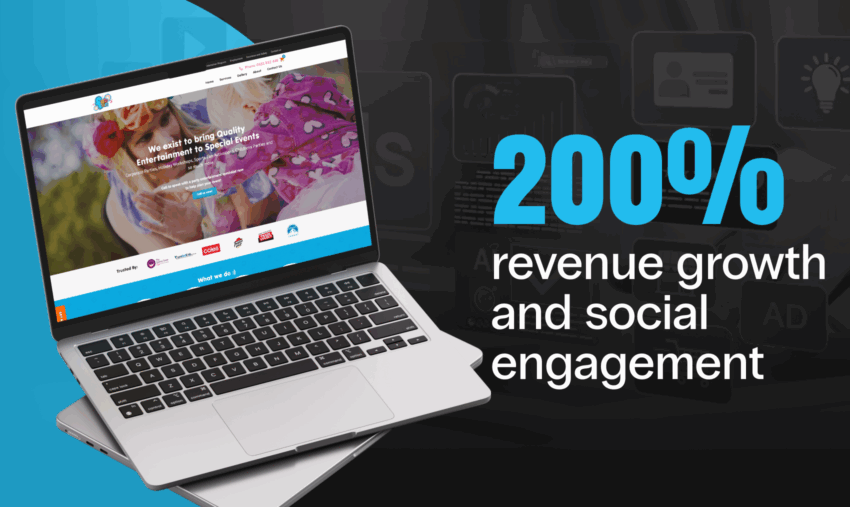The Ultimate Checklist for High-Converting Homepage Design

Your homepage is the most important page on your website. It’s your digital front door, your first impression, and, whether someone comes from Google, social media, or word-of-mouth, often the deciding factor in whether they stay or leave. In just a few seconds, visitors make a judgment about your credibility, professionalism, and whether you can help them.
A high-converting homepage isn’t about being trendy or overdesigned. It’s about clarity, intention, and user experience. This guide gives you a complete, practical checklist to help you optimise your homepage for trust, conversions, and ease of use, with no design degree required.
Why Your Homepage Matters More Than You Think

Your homepage has one job: guide visitors toward the next step.
A great homepage answers:
- Who are you?
- What do you offer?
- Why should someone trust you?
- What should the visitor do next?
A weak homepage leaves visitors confused or overwhelmed, resulting in high bounce rates and lost leads. A strong homepage, on the other hand, removes friction and clearly communicates value, making it one of the fastest wins for improving conversions.
Use the following checklist to audit or rebuild your homepage. Each item includes practical examples and best practices.
1. Craft a Clear Value Proposition
Your value proposition is the backbone of your homepage. It answers three crucial questions in under 5 seconds:
- What do you do?
- Who do you help?
- Why should a visitor choose you over an alternative?
A strong value proposition reduces confusion, increases trust, and helps users instantly understand whether they’re in the right place.
How to craft a strong value proposition:
- Keep it to one concise sentence.
- Focus on the benefit—not the features.
- Use plain English instead of corporate buzzwords.
- Avoid trying to appeal to everyone; clarity beats broadness.
Example
Weak: “Innovative digital solutions for today’s businesses.” This could describe a tech firm, agency, SaaS platform, or consultancy—not helpful.
Strong: “We help small businesses grow through strategic SEO, Google Ads, and high-performance web design.” Now the visitor knows exactly what you do and who you serve.
2. Use a Strong, Benefit-Focused Hero Headline

Your hero headline is the most-read element on your homepage. Its job is simple: communicate the main outcome your product or service delivers.
Why this matters
Visitors decide whether to scroll or leave based on your headline alone. A weak headline loses attention; a strong headline signals immediate relevance.
Best practices:
- Lead with a benefit, not your brand name.
- Use simple, conversational language.
- Make it about the user’s goals or pain points.
- Avoid vague statements like “Welcome” or “Solutions for You.”
Example
Weak: “We Are TechFix Solutions.” This tells users nothing useful.
Strong: “Fix your IT problems fast with same-day business support.” Specific. Benefit-driven. User-focused.
3. Add a Supporting Subheadline
Your subheadline should clarify how you deliver the benefit promised in your headline. Think of it as the connector between your headline and your main CTAs.
What a good subheadline includes:
- A simple explanation of your service or product
- A short phrase highlighting your process or differentiator
- One sentence only (two maximum)
Example
“24/7 monitoring, rapid incident response, and proactive maintenance to keep your business running smoothly.” It expands on the headline without overwhelming the user with detail.
4. Optimise Your Above-the-Fold CTA

Above the fold—everything visible without scrolling—is prime real estate. Your CTA must be visible, strong, and easy to understand.
Best practices:
- Place your primary CTA prominently (top right + hero section).
- Make the button copy action-driven:
- “Get a Free Quote”
- “Book a Consultation”
- “Start Your Free Trial”
- “Get a Free Quote”
- Use a contrasting button colour for visibility.
- Avoid giving users too many choices; 1 primary CTA, 1 subtle secondary option (max).
What to avoid:
- “Learn More” (too vague)
- Multiple CTAs battling for attention
- Buttons that blend in with your background
Example:
Primary CTA: “Book a Free Demo”
Secondary CTA: “Watch Video Overview”
5. Showcase Immediate Social Proof
Social proof is one of the most powerful trust-builders on your homepage. People trust brands other people trust.
Types of social proof to include:
- Customer logos (“Used by 400+ Australian businesses”)
- Google star rating with real numbers (e.g., “4.9 ★★★★☆ on 350+ reviews”)
- Snippets of customer testimonials
- Awards, recognitions, certifications
- Short case studies or impressive stats
Placement:
- Above the fold if possible
- Or directly under the hero section
Why it works:
Social proof reduces perceived risk and validates your claims—critical for conversions.
6. Create a Clean, Intuitive Navigation

Navigation should guide users—not confuse them. Complex navigation increases bounce rates and cognitive load.
Best practices:
- Limit top-level menu items to 4–6.
- Use descriptive labels:
- Good: Services, Pricing, About, Contact
- Bad: Solutions Hub, Insights Engine, Explore
- Good: Services, Pricing, About, Contact
- Keep dropdown menus minimal.
- Add your primary CTA (e.g., “Book a Call”) in the top right corner.
- Include a sticky header on mobile for quick access.
Avoid:
- Mega menus with 30+ links
- Unclear or “cute” labels
- Navigation that changes between mobile and desktop
Your navigation should behave like a good tour guide—clear, predictable, and easy to follow.
7. Apply Strong Visual Hierarchy & Scannability
Most visitors scan before they read. A high-converting homepage uses hierarchy to guide the eye.
Tools for visual hierarchy:
- Larger, bold headlines
- Subheadings to break sections
- Ample whitespace
- Bullet points
- Contrast between sections (light/dark backgrounds)
- Icons to support text
Example
Headline: “Why hundreds of businesses trust us”
Subheadline: “We deliver consistent results, clear communication, and measurable ROI.”
Bullets:
- Dedicated account manager
- Monthly reporting
- Proven industry frameworks
8. Maintain Brand Consistency
Consistency signals professionalism and reliability. Inconsistency signals sloppiness.
Check for consistency in:
- Colour palette
- Button shapes and styles
- Font families and text sizes
- Image style (e.g., real photos vs illustrations)
- Icon design
- Tone of voice
A homepage using five different fonts and six button styles creates visual noise. Your homepage should feel polished, intentional, and aligned with the rest of your brand.
9. Optimise for Mobile Experience
With most users browsing on mobile, your homepage must work flawlessly on smaller screens.
What to look for:
- Buttons large enough for thumbs
- Text sizes readable without zooming
- No horizontal scrolling
- Clean spacing so elements don’t feel cramped
- CTAs remain visible and accessible
- Hero image scales correctly
Bonus:
Use a sticky CTA bar on mobile (if appropriate) to increase conversion opportunities.
10. Improve Page Speed & Performance
Slow load times are conversion killers. Every second matters.
Speed best practices:
- Compress JPG/PNG images
- Serve WebP/AVIF formats
- Minify CSS and JS files
- Reduce excess animations
- Remove unnecessary plugins
- Use caching & a CDN
- Choose fast hosting (especially for WordPress sites)
Speed benchmarks:
- Under 2 seconds = ideal
- Under 3 seconds = acceptable
- Over 3 seconds = losing conversions
Even a beautiful homepage won’t convert if it loads like dial-up.
11. Add Trust Signals
Trust is everything—especially for visitors unfamiliar with your brand.
Trust-building elements include:
- Security badges (SSL, secure checkout)
- Guarantees (e.g., “30-Day Money Back Guarantee”)
- Certifications (e.g., Google Partner, licensed, insured)
- “As featured in” or “Partnered with” media mentions
- Clear business address and contact details
- Years in operation
These elements reduce anxiety and reassure users that your business is legitimate.
12. Remove Jargon & Prioritise Message Clarity
Clarity converts. Confusion kills conversions faster than anything else.
Avoid:
- Corporate jargon (“end-to-end solutions”, “synergistic frameworks”)
- Overly technical language that non-experts can’t understand
- Dense paragraphs
Embrace:
- Short, direct sentences
- User-focused language
- Plain English
- Benefits over features
Example
Confusing: “We provide integrated end-to-end solutions that leverage omnichannel frameworks to enhance scalability.”
Clear: “We help you get more leads with SEO, Google Ads, and high-converting websites.”
If a user has to stop and think, they stop converting.
13. Add Intent-Led Sections Below the Fold
Once users understand who you are and what you offer, they scroll to learn more. Below-the-fold sections should guide them through a logical journey.
Essential below-the-fold elements:
- How It Works
- Simple 3-step process
- Helps users understand what happens next
- Simple 3-step process
- Features or Services Overview
- Use sections with icons
- Keep copy short and benefit-focused
- Use sections with icons
- Benefits or Outcomes
- Focus on transformations, not features
- Example: “Save hours every week” rather than “Automated scheduling”
- Focus on transformations, not features
- Customer Success or Case Studies
- Real results and real names are powerful
- Real results and real names are powerful
- About Section Preview
- Give users a human connection to your brand
- Link to full About page
- Give users a human connection to your brand
- Pricing Preview (if applicable)
- Even “From $X/month” reduces fear of hidden costs
- Even “From $X/month” reduces fear of hidden costs
- FAQ
- Address common objections
- Helps users feel confident before clicking your CTA
- Address common objections
Why this matters:
These sections reduce friction, answer questions, and prepare users emotionally to convert.
Summary
A high-converting homepage isn’t built on guesswork—it’s built on clarity, structure, and psychology.
Here’s your simplified checklist:
- Clear value proposition
- Strong hero headline
- Supporting subheadline
- High-visibility CTA
- Immediate social proof
- Clean navigation
- Clear visual hierarchy
- Consistent branding
- Mobile optimisation
- Fast load times
- Trust signals
- Jargon-free messaging
- Intent-led sections
- Useful footer
When in doubt: simplify, clarify, and guide the user toward the next step.
Ready to Transform Your Homepage into a Conversion Engine?
Every day with a weak homepage costs you leads. Contact us now for a free consultation and start converting more visitors this week.



